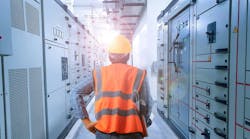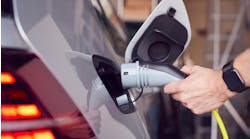Whether you’re a newly graduated engineer who’s just entered the workforce, a seasoned designer who’s been confined to cubicle walls, or anywhere between, chances are at some point you’ll have to pull out the hard hat, lace up your work boots, and head to your first site visit.
An important milestone in any electrical professional’s career, the first site visit can be a daunting task, especially if you’re going solo. Many factors — including state of the project, purpose of the visit, size of the site, access to electrical/telecommunications rooms, and presence (or lack thereof) of clients — can make or break the success of this visit. While by no means a definitive formula for a 100% successful site visit, this three-phased approach should help your first (or 50th) site visit be a positive one.
Phase A: Preparation
Before jet-setting across the country or hopping in the company car to the other side of town, tons of prep work can (and should) be done in the office in the days and weeks leading up to the site visit.
Document review
Before starting any project task as an electrical professional, the first question that should always come to mind is: “What is the scope of work?” This is no different for a site visit. Becoming intimately familiar with the scope before arriving will greatly bolster your time on site. Are there as-constructed documents of the existing site? Is this visit to survey a small room of an existing building for light renovations? Are you evaluating a specific piece of equipment the client has on-site? Are you looking at a greenfield site for possible utility connection points with the power and/or telecommunications company? Remembering what you are there for will keep you focused on the task at hand and will help prevent other issues from taking precedence over the task at hand.
Other documents to review are specific client standards you are obligated to follow and any Code requirements that might apply to your project. Safety requirements, such as access to electrical rooms and equipment, personal protective equipment (PPE) requirements, lock-out/tag-out procedures, etc., should also be reviewed and planned for.
Site objectives checklist
Depending on the size and scope of the project, as well as the number of documents reviewed, you might feel like you’ve been drinking through a firehose before leaving the office. I’ve found it extremely helpful to gather the information into a checklist of objectives that need to be captured on the site visit. Whether it’s a list of room names you can check off after documenting or specific panelboard names that need to be examined, having a physical list of items will keep you focused and on track during the investigation.
Packing list
If you’ve ever packed a suitcase for a trip without a plan, chances are you’ve either paid the airline excessive baggage fees or had to find a 24-hour store that sells socks, toothpaste, and phone chargers when you arrive at your destination. The same can happen when packing for a site visit.
Do you need physical copies of floor plans, panel schedules, and the scope of work? Do you have a digital copy of the National Electrical Code (NEC), or do you need to bring a hard copy with you? Do you have the names and phone numbers of your site contacts? By preparing a packing list during the preparation stage, issues that can be avoided (such as forgetting a critical item) will be avoided.
Consulting with other professionals in your office on what they would bring to a site visit is always a great start. It was recommended to me years ago to bring a whiteboard with small magnets on the back and a dry-erase marker to a site visit where multiple panelboards needed to be photographed. I was able to write the panel name, size, and location on the whiteboard and stick it on the cover for each photograph, which provided clear direction when reviewing the photographs later in the office.
Phase B: Site visit
You’ve diligently studied the scope of work, created a bulletproof list of objectives, packed everything you need, and finally arrived at the site. This is where the rubber hits the road — and the work starts.
It’s common on your first day at the site to feel overwhelmed, especially if most of your experience has come from behind a computer screen. Take a deep breath. Depending on time and if anyone else is with you, you could be tempted to move sporadically around the site, dig too deep into the first thing you see, or get rattled by the experience altogether. This is where preparation comes into play. Rely on the notes you have already taken and the objectives you’ve identified to keep you laser-focused on your task at hand. One great way to ease into the visit is by introducing yourself to key staff at the site, whether it’s a superintendent, client, electrician, or other professional involved with the project. Be sure to record names and contact details for follow-up later.
As you start the site survey, it’s helpful to perform a general high-level walkthrough of the areas noted in the scope of work. Then you can ease into gaining familiarity with the site and start to make mental notes of areas that may require more or less attention than you initially anticipated. Once the walkthrough is complete, it’s time to dive into the investigation. I recommend using a systematic approach, where each item on your list can be completed for each space, area, etc.
Although I just recommended using a methodical approach, one thing that is critical to site visits is flexibility. Schedules will always change, access to areas will always be hard to gain, and lunch breaks will always seem to happen just as you get into something. That’s okay! As with most things in life, holding a rigid schedule can create more of a headache if and when plans change. That is the dichotomy of the tasks involved with site visits — maintaining the balance of a thorough schedule with the changing nature of teams and people.
While collecting data, marking up drawings, and photographing equipment, it’s always helpful to err on documenting more than you think you need. While you will always inevitably miss something (there’s always more to be seen), hedging your bets on gathering too much information seems to pay off in the long run. This is especially true for photographs — take plenty of them! With the amount of storage now available on digital cameras or smartphones, it’s a no-brainer to take as many photographs as you can.
It’s also helpful to establish a routine for the pictures you are collecting. For a given room or area, it’s beneficial to first take a picture of the room number (if applicable), an overall photo of the room, and then detailed pieces of equipment in the space. That way, it’s easy to discern where each picture was taken when you get back to the office. Another helpful hint for photographing survey areas is to review the photos while on site to ensure the information you need is visible. For example, it’s unfortunate to get back to the office to discover you cannot read the main circuit breaker ratings or the model number of panelboards that are needed to design the project.
At the end of the visit — or the end of each day of a multi-day survey — it’s helpful to review the notes, markups, and or/photographs you recorded. It’s also handy to record a summary of general findings and tasks completed. Taking the extra time at the site (or in your hotel room) to do this will help gather your thoughts, provide direction for the next day, and aid in any field reports that are required per your scope of work.
Phase C: The debrief
After returning from your first site survey, it might feel like the work is over — but in reality, it’s only just begun. It’s now time to review, collect, and disseminate the information you gathered to execute the design, make recommendations, or effectively communicate client needs. Your company might have a process for how and where to upload documents and photographs, put markups into design software, or share your field notes with the team. This is where the daily review of the information you gathered will come in handy.
Another great practice is to follow up with the contacts and staff you met with on site. It’s incredibly important to thank them for their time and direction as well as follow up on any critical issues or agreed-upon assumptions that were documented and discussed in the field.
Perhaps the most important step of this last phase is to conduct an internal review of the site visit and your performance on the trip. What went well, not so well? Were there any items you wished you had while in the field? Did you bring anything unnecessary, or was anything a burden to carry? Were you overly stressed due to a lack of preparation or lack of access? After asking yourself these questions, plan on what you can do differently next time and record them in a document to access later. That way, you are setting yourself up for successful future site visits.




